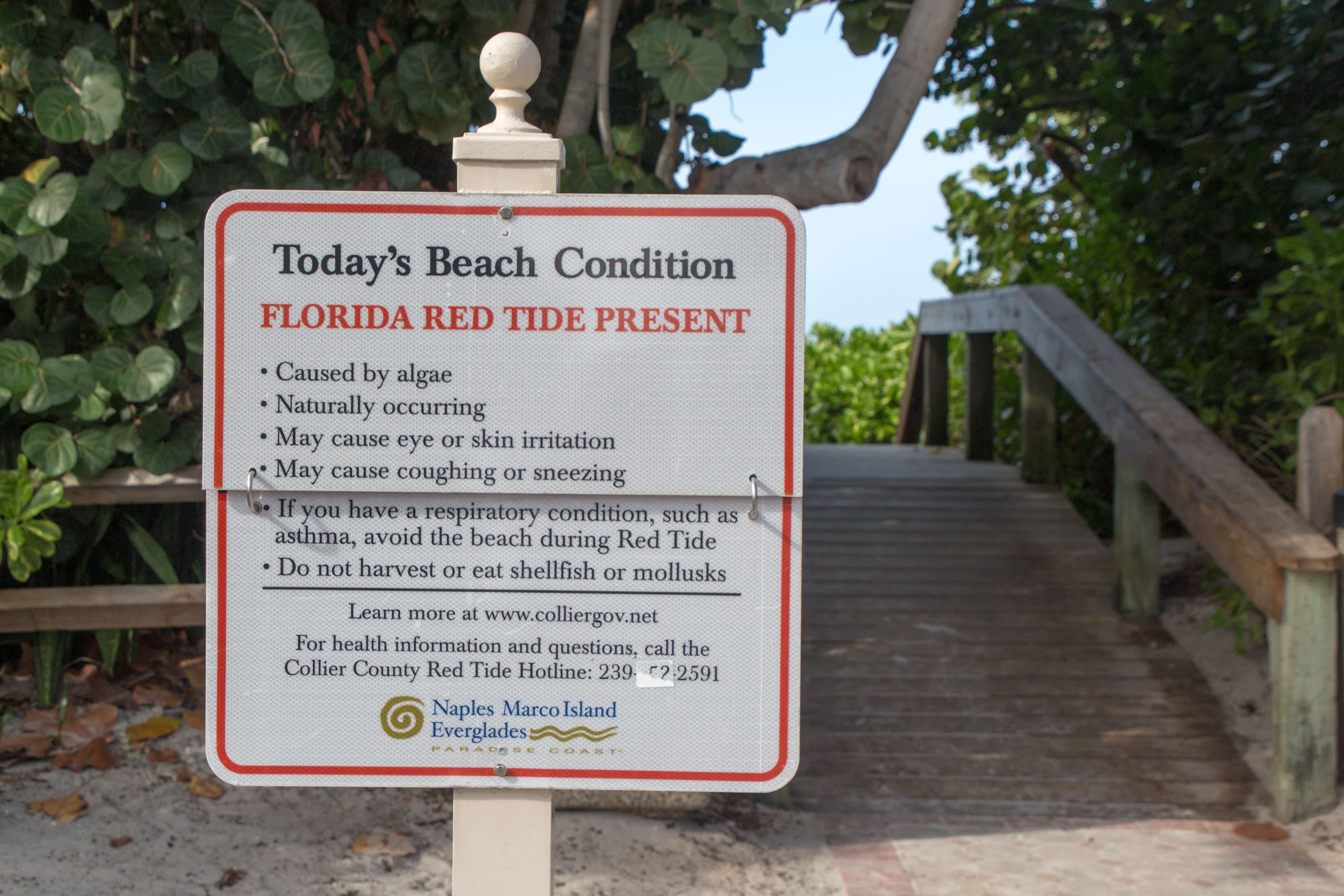Red Tide: When Water is Unsafe

You may have heard of the harmful algae blooms along Florida’s southwest coast responsible for the massive amounts of dead fish washing up on beaches. These blooms aren’t just deadly to marine life, but can be detrimental to human health as well.
It’s called red tide, named for the discoloration in the water when these algae blooms are present, and the effects have terrifying potential for humans, pets, and marine life alike. Red tide has been reported for centuries and can occur all over the world.
On average, red tide has been reported to last three to five months, according to the Florida Department of Health. The current and ongoing situation in Florida began in the Fall last year. It’s about to enter its sixth month, leaving some to wonder if future red tides will continue to last longer.
What is red tide, and why does it happen?
Red tide comes from naturally occurring algae multiplying at higher-than-usual levels, generating microscopic red tide organisms. This high concentration of algae leads to blooms that can block light and severely reduce oxygen levels in the water.
While some blooms are nontoxic, Karenia brevis – Florida’s most common red tide organism – creates brevetoxins, which fatally attack the nervous systems of various marine life. And for humans or pets that inhale or ingest these toxins, there can be serious side effects.
Although these blooms are naturally occuring, many experts believe factors of climate change could be contributing to the higher frequency and length of red tides. The rapid algae growth could be a result of numerous factors, including rising ocean temperatures, higher carbon dioxide levels, agricultural runoff (which can happen moreso during storms, such as last year’s Hurricane Ian).
What are the potential symptoms of red tide exposure?
Inhaling these toxins can be incredibly dangerous – even miles away from the shore. This is because the wind delivers the toxins onto – and beyond – the beaches, creating airborne irritants that cause respiratory issues.
Humans that ingest contaminated shellfish (such as lobster, crab, shrimp, oyster, scallops, etc) then become exposed to Neurotoxic Shellfish Poisoning (NSP), which can present symptoms anywhere from half an hour to several hours after eating.
So whether you’re swimming in it, breathing it in, or ingesting contaminated seafood, you face a number of mild to severe symptoms. These can include:
- Abdominal pain
- Diarrhea
- Hot and cold sensations
- Nausea and vomiting
- Numbness, tingling
- Rashes or skin irritation
- Irregular heartbeat
- High or low blood pressure
- Dizziness
- Slurred speech
- Burning eyes and itchy throat
- Coughing/wheezing
- Sneezing, runny nose
These toxins can seriously exacerbate existing respiratory issues for those with chronic respiratory conditions. Ongoing neurological symptoms can lead to partial paralysis, and severe cases of exposure can even lead to serious illness or death.
How To Stay Safe
To limit or avoid exposure to red tide toxins, make sure to watch for discoloration in the water, bad odors, or dead fish and other marine life, as these are the primary indicators of the presence of red tide. Also be sure to check with the regional reporting on water quality before you travel to beaches, particularly along the Gulf Coast.
Avoid contaminated fish and shellfish, and don’t swim in or around red tide – but if you suspect you are exposed, seek medical care if symptoms persist or are severe in nature. Wash off with soap and water if you come into contact with the toxins.
For respiratory symptoms, those without chronic conditions can use over-the-counter antihistamines to alleviate discomfort. Individuals experiencing difficulty breathing in areas affected by red tide can also find relief in air-conditioned spaces.
And don’t forget to keep your pets safe! Don’t let them ingest contaminated marine life or expose them to red tide waters, and make sure they have a comfortable breathing environment with plenty of clean, fresh water.
On the heels of World Water Day, and amongst a series of concerning climate events around the world, access to safe water and proper filtration should be a priority for society and individuals alike. Learn how Everest works to provide safe, filtered drinking water to communities everywhere.






